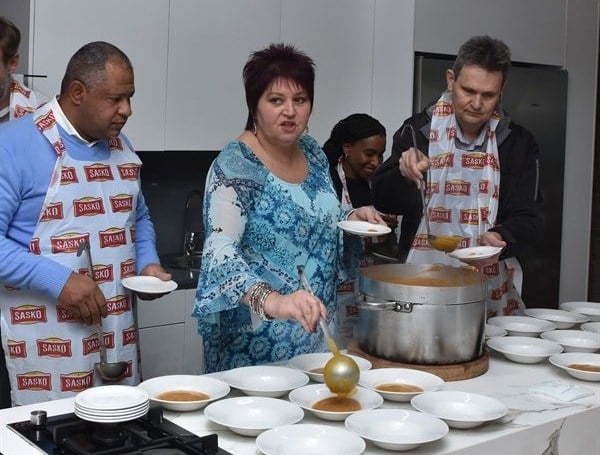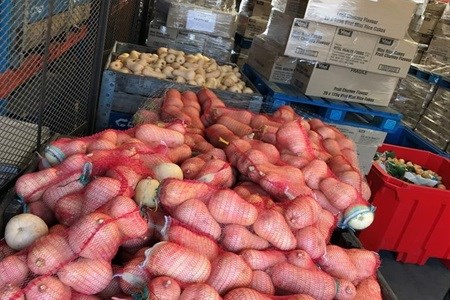FoodForward SA's Second Harvest an agri outreach to feed more people

FoodForward SA ambassador, Jenny Morris hosted the launch of the programme at her cooking school, CooksPlayground where we had the opportunity to make use of these surplus food items during a cooking session at the venue on 25 June 2018
To ensure food does not go to waste, the Second Harvest initiative allows farmers to donate their post-harvest surpluses while they are harvesting. Working with a network of farmers located in the Western Cape, Gauteng and Durban, FoodForwardSA, established in 2009, has made it possible for groceries provided to its beneficiaries to be of the highest nutritional value. The organisation reaches up to 250,000 daily at the cost of R0.79 per meal and as such are working around the clock to increase the number of people it is able to reach.
Here, Andy Du Plessis, FoodForward SA's managing director shares more on why Second Harvest was created and the importance of food safety...
Why was Second Harvest created?
Second Harvest was created due to seeing that 50% of edible agricultural production is wasted due to specification requirements, cold-chain and processing inadequacies as well as access to markets. This nutritious food goes to waste while 14 million South Africans go hungry every day.
How have you seen post-harvest surplus make a difference to underprivileged communities and that of your beneficiary organisations?
Food banking is the most effective solution at present in reducing hunger, and reducing food waste is the third most effective solution in fighting climate change. Our beneficiary organisations can now enjoy nutritious fruits and vegetables and have a balanced diet. Since more than 25% of South Africans cannot afford to buy food, least of all afford nutritious food, this food insecurity burden seriously threatens the economic viability of our economy.
Farmers located in the agriculturally rich areas of the Western Cape, Gauteng & Durban have partnered with #FoodForwardSA to donate their nutritious post harvest surplus to feed the hungry. #SecondHarvest pic.twitter.com/cGpBTS8ecF
— FoodForward SA (@FoodForwardSA) June 28, 2018
Diet plays an important role in healthy living, and having access to a diverse selection of food groups is necessary to stave off chronic diseases and maintain proper immunity to battle infections. Of primary concern to us, is the growing incidence of stunting amongst children under five years of age. If they experience chronic hunger at a formative stage, their full development potential is compromised and even diminished.
What are your thoughts on food security – how are you maintaining the safety aspects of food distribution?
Targeted food security interventions are costly to implement and maintain, and the return on investment may not be realisable in the short to medium term. While some specific interventions may be necessary to redress or reverse malnutrition-related diseases, there is a more cost-effective method that we believe should also be considered as a viable food security intervention programme called food banking.
Foodbanking simply involves sourcing, collection, sorting, and distribution of edible, within-date surplus food donated from supply chain partners, for distribution to registered NPOs that provide community-based feeding programmes. The model is simple, yet cost-effective and impactful.


How will Second Harvest ensure that more agricultural production is redistributed to the hungry?
We have dedicated refrigerated vehicles that go directly to our farmers to collect fresh fruit and vegetables while they are harvesting. This fresh produce meaningfully increases the nutritional value of the food distributed, as well as volume, which significantly increases the number of people FoodForward SA is able to reach.
Where would you like to see the Second Harvest initiative go in the next five to 10 years?
We have created a virtual food banking platform which links beneficiary organisations to the closest participating retail store at which it can collect surplus food. In this case, we would like the same concept to be used where our beneficiaries will be linked to farms where they can collect nutritious agricultural surplus food in future.
About Robin Fredericks
- #WomensMonth: 'Own your space, be unapologetically you' - Nosiseko Biko of Danone SA - 22 Aug 2023
- #AfricaMonth: Kuronga is using AI to help African farmers feed the continent - 31 May 2023
- #FarmingfortheFuture: Restore Africa Funds on the importance of regenerative agriculture - 25 May 2023
- Akkedisberg farmworkers inspire hope and empowerment with wine brand, Southern Treasures - 25 May 2023
- #FarmingfortheFuture: RegenAg SA - Advancing regenerative agriculture for soil, human and planet health - 28 Apr 2023
View my profile and articles...